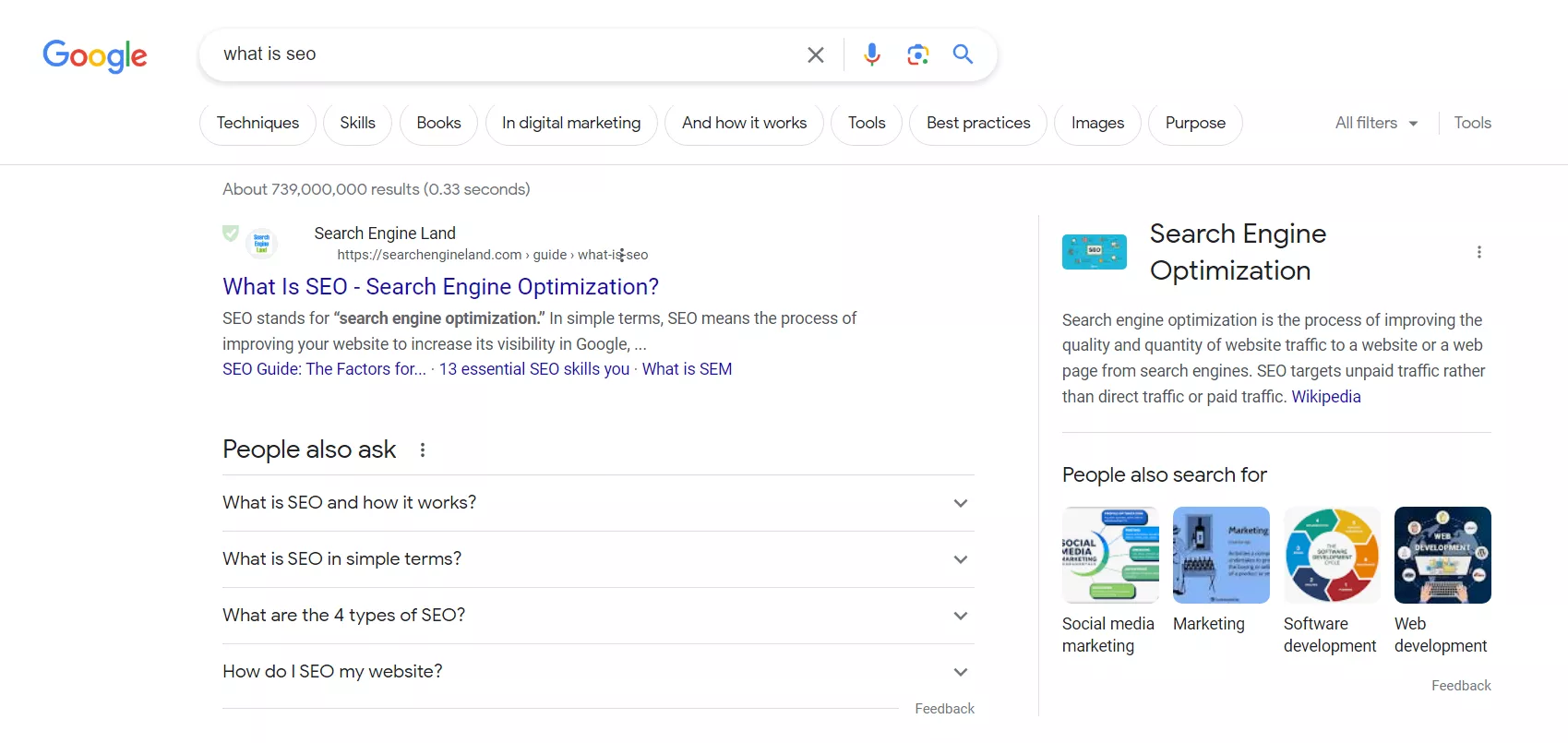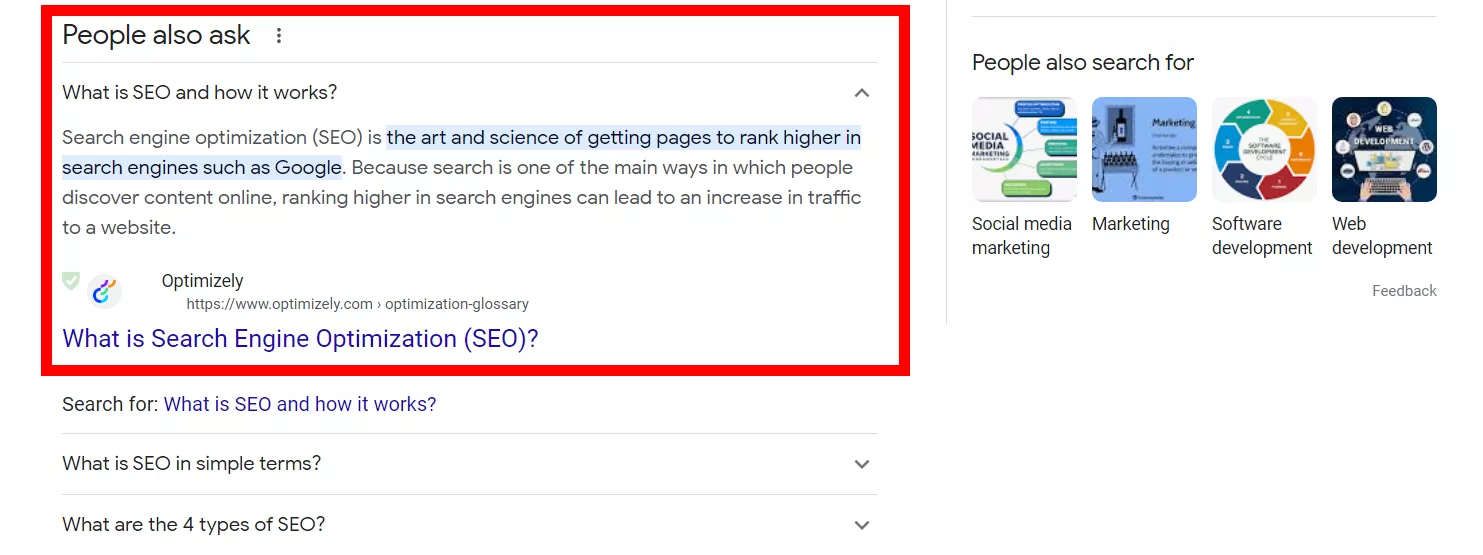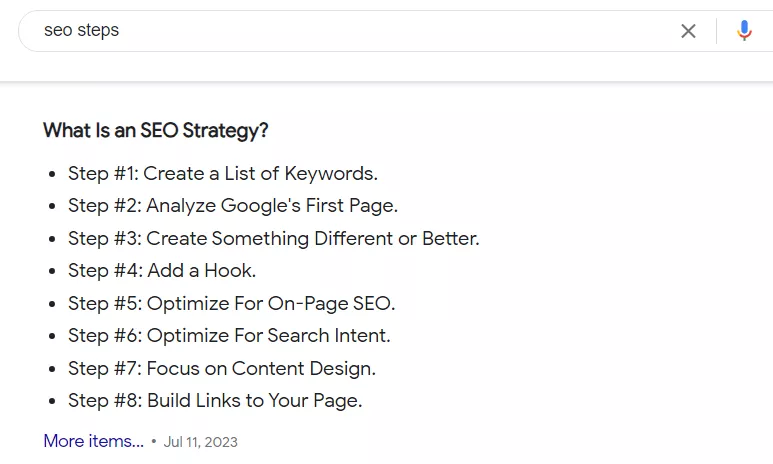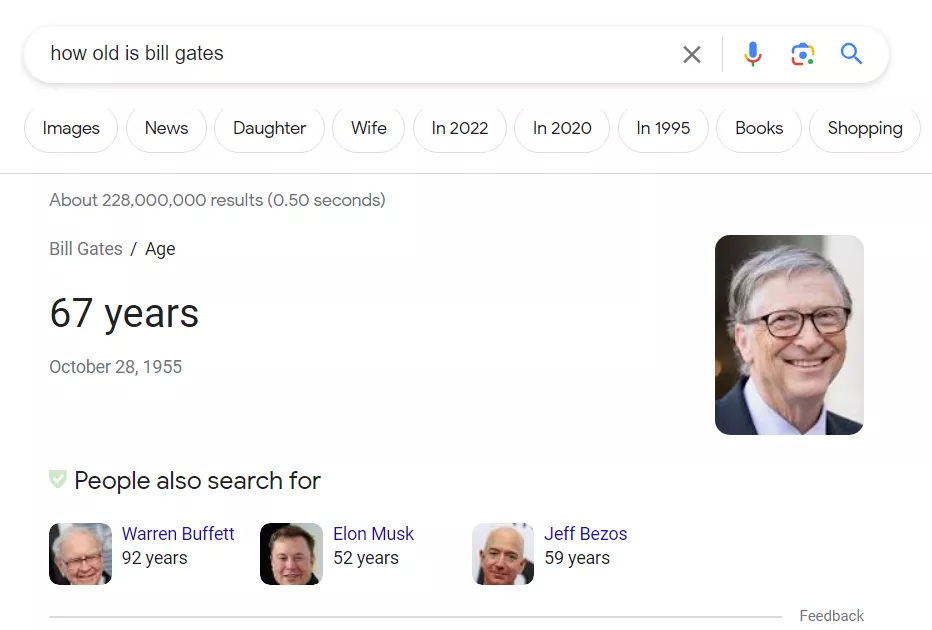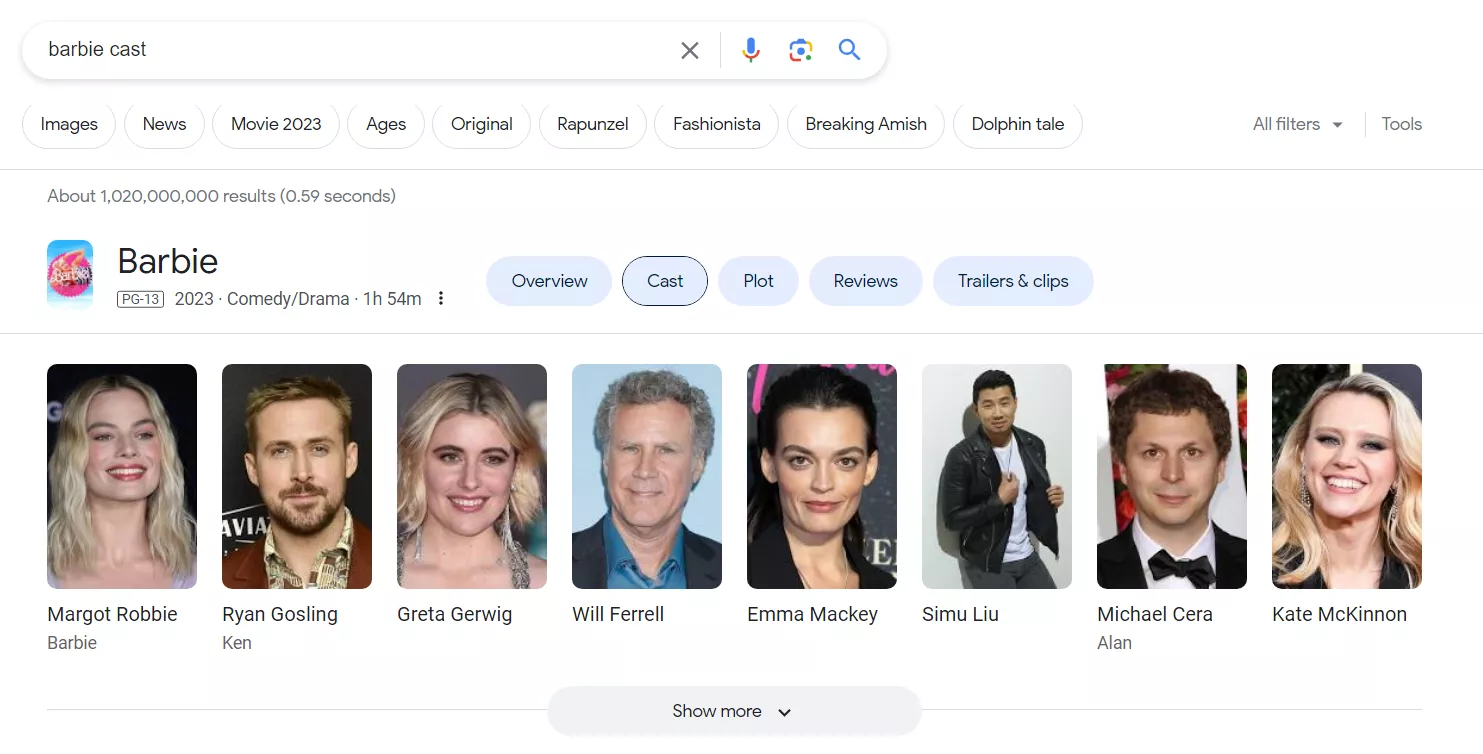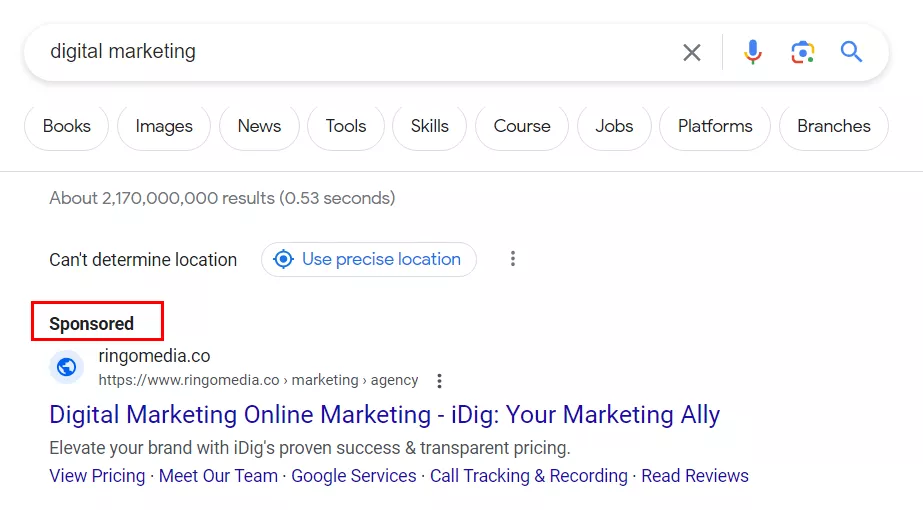Whether you want to promote or increase the visibility of a website in search engines, it all comes down to SEO. However, based on our experiences working with small businesses and entrepreneurs who are just about to go online, people have a poor understanding of SEO and what it does
SEO (Search Engine Optimization) is a set of measures and actions that eliminate, prevent, or minimize technical errors on a website and improve the accessibility of web pages by search engine crawlers. The essence of SEO is to make it faster and easier for users to find the information they need and to make that information as close as possible to what they searched for on Google, Bing, Yahoo, and other search engines.
Accordingly, SEO specialists have one common goal: to improve your website and gain the trust of search bots. This is done to help the target audience find your website, product, or service and perform the targeted action, such as subscribing, ordering, or making a purchase.
Search engine promotion is long, expensive, and provides no guarantees. That's why many projects have delayed investing in SEO, and now their customers can't find them on Google.
What, how, and where do users search?
When a user wants to find information on the Internet, they start by entering keywords (queries) into the search bar that are most likely to help them find the answer to their question. For example, to find the definition of SEO, users enter the following: what is seo, seo optimization is, what is search engine optimization, etc.
After entering the query and clicking the search button, a numbered list of 10-15 sites is displayed on each page (search results). Each keyword can generate a different list of search results. Sites will be assigned a certain position (i.e., be ranked in a certain order) depending on many factors.
In practice, users rarely go beyond the second page of search results. Therefore, to attract more visitors, a website should rank as highly as possible. The higher a site is in the search results, the more likely it is that a user will visit it.
Search engine blocks
When you type a query into the search bar, you will see not only a list of sites in certain positions but also blocks of information that are not ranked. For example, if you enter the query what is seo, the search engine will return a block with a definition and several infographics on the right, some sites ranked by position below, and a block of similar queries a little further down.
Apart from the main block of information at the top, there are other blocks in the search engine results. What are they?
- Related searches
- Advanced snippet
- Featured snippet
- Carousel
- Paid advertising blocks
- Knowledge graph
These result blocks are known as "position 0" because they do not have their own number on the search results page. For example, here’s a block of related searches with a drop-down list of questions and short answers:
In response to queries that involve a sequence of steps, such as a recipe or how to do something, the search returns a featured snippet in a list format:
These are the information blocks of the SERP and are usually displayed in the form of lists, tables, paragraphs, and videos. SEO can influence the information blocks or position-zero results and the top of the search results, while the rest cannot. Examples of other blocks:
1. Blocks of quick answers. For example, How old is Bill Gates?
2. Carousel results. Here, you can see photos of actors, the most related products, other brands, etc.
3. Paid ad blocks are ads that are displayed to the user based on their search queries. This block is located above all positions, on the side, or at the bottom of the numbered search results.
4. A knowledge graph panel contains precise and comprehensive information that answers a query about an object or person.
Search engines always aim to answer the user's query as accurately as possible, which means that they rank websites in descending order of relevance and potential usefulness to the user. But how do search engines do this?
How the search engine works
For a website to appear in search, it has to go through three stages: crawling, indexing, and ranking. There are search bots or crawlers that check websites for page content, relevance, reliability, and so on.
- At the crawling stage, search bots crawl the site and follow links to find new pages. The crawler can either find new pages on its own or be directed to them manually, e.g., using webmaster tools (Google Search Console).
- At the indexing stage, the bot determines what kind of page it is and examines its topic and content. If the bot considers the page content to be useful, it will add the page to its database or its own index.
- Finally, the bot selects the most relevant pages from its index and displays them in response to a specific query. The order in which they are displayed depends on how well the bot thinks the content (its quality, domain reputation, etc.) matches the user's expectations.
The job of an SEO optimizer is to improve a website so that the search engine considers its content relevant, adds the site pages to the index, and displays it as close to the top as possible in the search results. There are different methods of website optimization for this purpose.
Optimization methods
When they first came into existence, search engines were primitive, and it was easy to get a site to the top by unfair means. For example, by using a large number of keywords on a page or by submitting a site en masse to all sorts of directories and catalogs.
Nowadays, search engines have improved. The old methods no longer work, or they work only temporarily before the site gets flagged by search engines and disappears from the search results. Due to the fact that search engines are constantly developing their algorithms and introducing new rules, SEO optimization has been conditionally divided into white hat, gray hat, and black hat methods.
White hat SEO techniques
White hat SEO techniques (ethical SEO) are website promotion methods that are allowed and do not violate the rules of search engines.
White hat SEO methods cover both internal and external optimizations.
On-page SEO
On-page optimization begins with niche analysis. It is important to identify competitors, analyze and understand what you need to do to emphasize the site's topic and provide comprehensive information to users' requests in this niche. Each topic should have its own promotion strategy. You need to know which pages should be optimized, how to work with link equity, etc.
One of the most important steps in optimization is to build a keyword list. Select the keywords that you will later use for keyword optimization. A properly built keyword list that is organized by categories and filters will help you in several ways:
- Improve your website structure: extend or remove webpages, menu items/categories, and generate page URLs.
- Optimize tags and meta tags: add specific markers to pages that tell the user and the search engine what is there.
- Add text content to the pages.
When working with on-page optimization, the technical aspects, such as checking the website performance and content relevance, are crucial. For example, it’s important to check the following elements:
- Website navigation: check the functionality of all buttons, forms, and interactive elements on the website.
- Duplicate pages and broken links: create technical tasks to eliminate them.
- Loading speed: the user will not wait if your site takes too long to load.
- Indexing accuracy: it is important to ensure that pages such as shopping cart, search, and sorting pages do not appear in search results.
It is important to check every month how the website works if there are any errors, and if everything meets the search engine requirements. This will help you identify problems that may affect your website ranking.
Off-page SEO
External optimization – work on the mention of the site/brand in other sources, work with reputation, reviews, inbound links. Off-page optimization includes mentioning the site or brand in other sources and managing reputation, reviews, and inbound links.
Inbound links are links from other websites that point to your website. The total number of such links is called link equity. It is desirable for link equity to grow naturally. To do this, you need to create quality content, be able to engage users, and create opportunities for users to share your articles, videos, and information about promotions and discounts.
If your website's link equity is stagnant compared to your competitors, you can use artificial link-building methods.
Important: If you build links incorrectly (when many links to a site suddenly appear, using spammy methods or links from low-quality sites), you will often be penalized by search engines. Such link building is similar to gray hat or black hat SEO techniques.
For businesses looking to enhance their online presence and improve search engine rankings through effective link building strategies, partnering with a reputable link building company can provide expert guidance and support to build high-quality backlinks and drive organic traffic to your website.
Gray hat and black hat SEO techniques
Using gray hat and black hat SEO techniques can help you get to the top faster, but at the same time, you risk getting penalized by search engines. The more black hat methods you use, the more you will violate search engine rules. Penalties range from a decrease in search results, a complete ban, to exclusion from future indexing.
Black hat methods are dishonest methods of website promotion and are forbidden by search engines.
Examples of black hat SEO techniques:
- written text with keyword stuffing;
- links from doorway pages or sites aimed at advertising only;
- various spam to attract traffic;
- cloaking, which is when a user sees one thing (for example, good text) and another is made for the search engine with keyword stuffing;
- links on invisible small images (1x1 size) or on punctuation marks;
- buying temporary links that will be deleted later or links from low-quality websites (automatic and bulk link buying).
Important: Search bots almost always and very quickly detect black hat optimization methods, so you shouldn't use them if you don't want to get caught by a filter and get penalized.
Gray hat methods are not banned by search engines but are not approved by them either. White hat SEO techniques are most often used for internal optimization, and some gray hat techniques can be used for external optimization (for example, using exchanges for eternal links and submitting to directories).
Pros and cons of SEO
Let's not discuss whether SEO is necessary. There is no doubt that website optimization is a must. However, there are some peculiarities of online promotion that you need to be aware of: business owners sometimes expect too much from SEO (and, therefore, SEO specialists) or do not believe in this tool at all. So, let's talk about it.
Pros of SEO:
- Profitability.
SEO attracts traffic that includes users who have entered a key query of interest and come to the site from a search. These people are ready to take a targeted action (e.g., make a purchase). In other words, by increasing a site's visibility in search results, SEO increases site revenue.
- Long-term effects.
Compared to work done on contextual components, optimization has long-lasting effects. After a certain category is optimized, the site will rank highly in search results for certain queries. This means that search bots like the site and will rank it well until (if) the requirements or rules of search engines change.
- Increased customer trust.
Users may not trust advertisements and are more likely to go to sites that are at the top of search results.
On-page optimization also makes the site more user-friendly. This leaves a pleasant impression and makes them want to return to the site, make another purchase, and recommend it to their friends and acquaintances.
Cons of SEO:
- Takes much time to implement and bring results.
Unlike paid advertising, you shouldn't expect quick results from SEO. Search engine optimization produces results but is a marathon, not a sprint.
- No guarantees.
No SEO specialist can give you 100% guarantees. After all, search engine requirements may change and negatively affect even a well-optimized website. For example, over time, it became necessary to focus on the mobile version of the site because search engine algorithms have changed with the rise in traffic from mobile phones.
- The need for complex technical improvements.
A large number of improvements to the website are usually required, and they need to be timely implemented to achieve the goals of SEO.
Marketplaces also use SEO techniques. To learn more about this, read our article: The eBay Marketplace and How to Advertise Products on It
Conclusions
1. SEO (Search Engine Optimization) is a set of measures and actions that eliminate, prevent, or minimize technical errors on a website and improve the readability of the resource for search engine crawlers.
2. When you enter a query in the search bar, you will see not only a list of sites in certain positions but also blocks of information that are not ranked in a specific order. These blocks include:
- Related searches
- Advanced snippet
- Featured snippet
- Carousel
- Paid advertising blocks
- Knowledge graph
3. For a website to be included in search results, it must go through three stages: crawling, indexing, and ranking.
4. The job of an SEO specialist is to improve a website so that the search engine considers its content useful, adds it to the index, and displays it as high up as possible in response to a query. There are several methods of SEO optimization: white hat (on-page and off-page), gray hat, and black hat methods.
5. SEO has several benefits: it boosts profitability, fosters customer trust, and has long-term effects. It also has its downsides. There are no guarantees, and even after implementing complex technical improvements, it could take a long time to see results.
Related Articles
Five Steps to Building a Keyword List and Clustering Keywords
In this article, I'll show you how to identify and group keywords in a way that will effectively attract your target audience
Amazon Dynamic Bidding: The Strategy and Psychology Behind Top Brands
Dynamic bidding on Amazon isn’t just another checkbox in your campaign settings; it’s the difference between throwing money at the Amazon advertising wall and orchestrating a symphony of strategic bid adjustments that separate the pros from the pretenders
A Netpeak Case Study: How to Generate Leads Through LinkedIn and Get Results in Six Months
We show our approaches step by step

